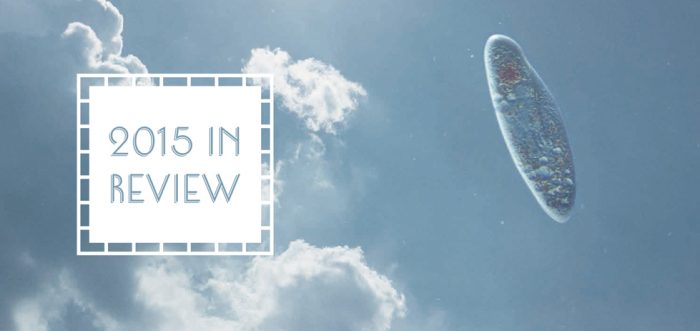A lot of the year-end wrap up pieces that find their way online from as early as the 1st of December tend to focus on collective rankings, from the institutional prestige and cloaked mystery of Cahiers du Cinema’s always eccentric list to the writers’ polls of sites like the A.V. Club and Indiewire. Pitting films against each other so that a publication can claim its ‘winner’ is a mostly uninteresting way to assess the year that was. We were guilty of doing it last year in our poll but since then our editors have come to the agreement that not only was that poll unrepresentative of all of our contributors but was also a far less engaging way to approach the wide variety of films we saw.
For this Staff Picks piece, we’re taking inspiration from the annual World Poll in Senses of Cinema, which asks participants to submit lists of their own choosing (i.e. Best Theatrical Releases, Festival, Restorations) and presents those responses in a database. This piece is a variation on that: we asked contributors to submit a list (ranked or unranked) of films that in their mind could be considered a 2015 release, along with an explanation of their choices. By expanding what films could be considered beyond the relatively lackluster lineup that saw wide Australian distribution in 2015 and by asking writers to elaborate on their choices, we want to put the emphasis on the discovery of films rather than any agreed quality. Hopefully the highly varied picks of our contributors below will encourage readers to seek out any that catch their interest.
Note: We have a review for almost every film listed below. You will be able to click through on the film titles in list form.
Jeremy Elphick
Arabian Nights (Miguel Gomes)
Beats of the Antonov (hajooj kuka)
Cemetery of Splendour (Apichatpong Weerasethakul)
Horse Money (Pedro Costa)
The Look of Silence (Joshua Oppenheimer)
Right Now, Wrong Then (Hong Sang-soo)
Snow Monkey (George Gittoes)
Stories of Our Lives (The NEST Collective)
Tangerine (Sean Baker)
Mustang (Deniz Gamze Ergüven)
HM:
The Family (Liu Shumin)
The Assassin (Hou Hsiao-Hsien)
Taxi (Jafar Panahi)
Spartacus and Cassandra (Ioanis Nugen)
Approaching the Elephant (Amanda Wilder)
The Look of Silence was a film with huge shoes to fill, but in doing just that the documentary has acted as a palpable affirmation of Oppenheimer’s approach to documentary-making – experimental, precise, philosophical, and incredibly thorough in its emotional excavation; both of the viewer and subject. Far leaner in run time than The Act of Killing, Oppenheimer’s finds its strength in restraint: in the intricate and harrowing minimalism that frames its soundscapes, in the phrases that go unsaid and the stark facial expressions that render this need for dialogue redundant. Working in subtleties, owning its titular silence, Oppenheimer’s film is as worthy of being deemed his “opus” as his previous work – for completely different reasons.
Arabian Nights was a difficult film to navigate at times, as I highlighted in our roundtable after seeing it at Sydney Film Festival. Despite this, Gomes’ work – reconciling acerbic political commentary with a deep reverence for the imagination; coupling an imperative for hope, with an acceptance the extensive reasons for hopelessness within the country – is a much-needed work of messy, yet nuanced, optimism.
A beautiful, revealing and complex look at the Blue Nile and Nuba regions of Sudan, hajooj kook’s Beats of the Antonov is both an intimate and political film that excels in its marriage of both elements. Despite the short run-time, hajooj’s film is able to express an incredible amount as it challenges external preconceptions of Sudan, choosing instead to celebrate its people – in particular, their music and the intricate histories and narratives it represents.
Cemetery of Splendour is one of Apichatpong’s most subtle films, one of his most slow-moving, and with multiple viewings: one of his most rewarding. From the carefully-executed surrealism, the cutting political undertones, and the directors own relationship with his hometown being played out in the intricacies littered throughout the narrative on screen, Cemetery of Splendour is one of Apichatpong’s most complex and satisfying works.
Horse Money could be the most harrowing Costa film to-date,1 although this feeling emerges in a more creeping manner. Psychologically-draining and viscerally distinct, Costa’s engagement with the senses in Horse Money results in words reflecting on the film doing it little justice – although Ivan Cerecina’s review for the site does a phenomenal job.
It’s been a particularly strong year for Hong Sang-Soo, with Hill of Freedom getting applauded almost as much as the directors Locarno-winning title. Right Now, Wrong Then doesn’t break from Hong’s formula of pacing, pathos, and style – that said, it excels and refines everything the director is known for; as his strongest offering since the much-loved The Day He Arrives.
George Gittoes has been making documentaries for decades, as one of Australia’s most accomplished artists still working today. Snow Monkey rounds off a trilogy of documentaries set in the Middle East for Gittoes (following Love City Jalalabad and The Miscreants of Taliwood) and stands as the most complete work from the director.
Kenya’s The Nest Collective have operated since 2012, however, the astounding Stories of Our Lives has received the widest distribution of their work to date. Over five vignettes, the film paints a diverse and broad portrait of LGBTIQ lives within Kenya. Collated from hundreds of stories collected by the group, Stories of Our Lives is an emotional, intimate, and revealing work.
Tangerine has emerged as one of the most important films of the year for many reasons: the shift in representation on screen, the honesty of the script and performances, and the resonance the film has had within the community it aims to represent, but it also is one of the most enjoyable works of 2015.
Mustang marks the growing international presence of Turkish cinema – as well as the growing prominence of women working within the film industry in the country. Portraying a markedly gendered issue and narrative, Ergüven’s perspective bleeds into the work in a telling way; as the film navigates issues of abuse and violence without ever needed to recreate them in gratuitous scenes.
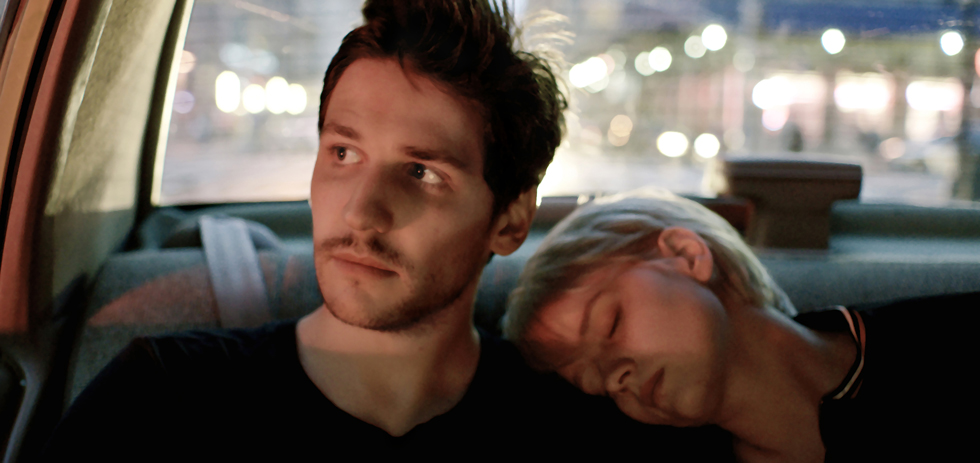
Conor Bateman
1. Taxi (Jafar Panahi)
2. The Royal Road (Jenni Olson)
3. Court (Chaitanya Tamhane)
4. Eden (Mia Hansen-Løve)
5. City of Gold (Laura Gabbert)
6. Office (Johnnie To)
7. Welcome to Leith (Michael Beach Nichols and Christopher K. Walker)
8. Haemoo (Shim Sung-bo)
9. In Transit (Albert Maysles, Lynn True, Nelson Walker III, David Usui and Benjamin Wu)
10. The Lobster (Yorgos Lanthimos)
My two top films for the year are very much concerned with cities; Jafar Panahi’s masterful Taxi (retitled by Madman to Tehran Taxi here in Australia, presumably to prevent people confusing it for a re-release of the 2004 Jimmy Fallon vehicle) sees the filmmaker as literal driving force of his film, taking his taxi through the streets of Tehran and picking up passengers who represent various worldviews in the city, and Jenni Olson’s wonderful essay film (of sorts) The Royal Road, which is comprised solely of locked off shots of San Francisco on 16mm.
Chaitanya Tamhane’s fairly savage social satire Court was one of the most pleasant surprises from the festival circuit in 2015, earlier this year I wrote that “sixty years ago, the story of an impassioned folk singer tried on trumped-up charges would have been a perfect fit for the Bengali melodramas of Bimal Roy or Ritwik Ghatak. In Tamhane’s hands, though, it becomes the premise for one of the most adventurous and pointed comedies to come out of India in recent memory.”
Eden pretty much gutted me, a decades-long story of arrested development as a promising DJ in the French Touch scene. City of Gold and In Transit were also very emotionally charged films, the former dealing with culture and criticism in Los Angeles and the latter an intimate and heartfelt chronicle of a cross-country train ride. Johnnie To’s Office was a musical delight, Welcome to Leith a chilling and very cleverly edited documentary about civil liberties, Haemoo a brutal thriller disguised as social drama and The Lobster yet another bleak portraiture from Greek auteur Yorgos Lanthimos.
In terms of release, it’s worth noting that of all the films in my list above, only three had a theatrical run in Australia, Eden, Office and The Lobster, and the latter two came from film festivals. It’s something of a shame that a taut and twisty thriller like Haemoo never got a shot at a limited run, ending up on DVD only, as Felix lamented last week. The others, though, are firmly festival fare, though here’s hoping Welcome to Leith gets a deserved theatrical in 2016, just as Taxi has just been announced for limited runs in Melbourne at the ACMI and at Golden Age Cinema in Sydney for early January.
Honorable mentions go to Jonathan Demme’s delightful Ricki and the Flash, Paul Thomas Anderson’s Inherent Vice (which I very much need to revisit), George Gittoes’ harrowing and unique Snow Monkey and two online-only essay films I saw this year: Tim Wong’s Out of the Mist and Charlie Lyne’s Fear Itself. I also have to mention the Zellner Brothers’ Kumiko, The Treasure Hunter, which I saw for the first time last year at Sydney Film Festival and again earlier this year ahead of its short theatrical run. Were it not for my hesitancy to label it a 2015 film it would be among my top five for the year.2
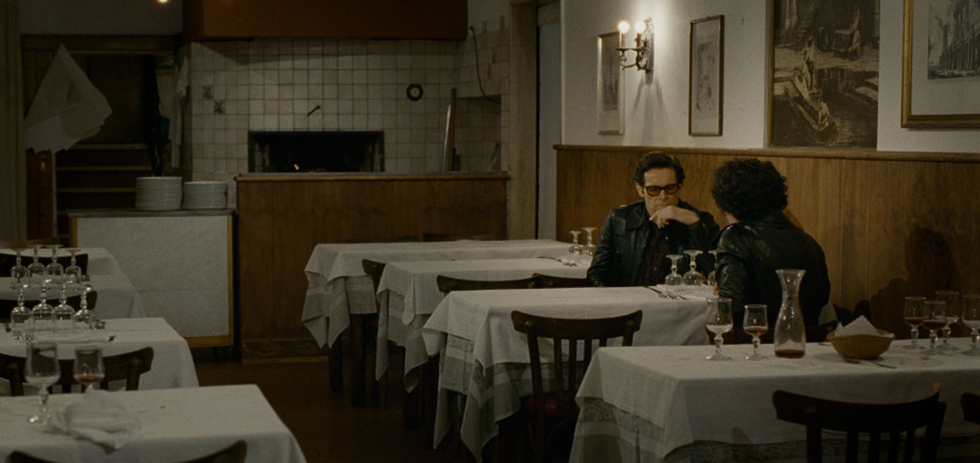
Brad Mariano
1. Pasolini (Abel Ferrara)
2. Arabian Nights (Miguel Gomes)
3. The Duke of Burgundy (Peter Strickland)
4. Storm Children – Book One (Lav Diaz)
5. Cemetery of Splendour (Apichatpong Weerasethakul)
6. The Homesman (Tommy Lee Jones)
7. Hill of Freedom (Hill Song-soo)
8. Taxi (Jafar Panahi)
9. The Witch (Robert Eggles)
10. Horse Money (Pedro Costa)
At a glance, it’s hard to say whether this list is a symptom or a vindication of my film-going habits as I find myself only really watching new films for one week in June and another in August. Festivals seem more and more important each year, and only one of these I saw in a different context – Tommy Lee Jones’ thoughtful Western The Homesman, which was relegated to home video viewing (to which end I strongly encourage you to pick up Madman’s Blu-ray). That’s not to say I didn’t have fun in a multiplex this year – I definitely echo the general consensus on Mad Max: Fury Road as superior entertainment, though I must say if we’re talking vehicle-heavy franchise instalments, Furious 7 came slightly closer to breaking into my list than George Miller’s beast.
Of my list, the top half are nearly interchangeable – though of my absolute favourites, Pasolini might be hardest to explain my own feelings towards. There’s an elusive, haunting poetry to the film that sticks with me – in fact, it’s the only film I’ve ever wanted to (or perhaps, needed to) see twice in the same Festival. The Duke of Burgundy is a film universe I can’t wait to jump back into, and perhaps the most surprising for me was Lav Diaz’s latest. Playing like a B-side to his more prestigious epic From What Is Before, it distilled Diaz’s strengths of pure image making and establishing temporal rhythms into a fascinating project that said more about his country and countrymen than his previous two bloated narrative outings
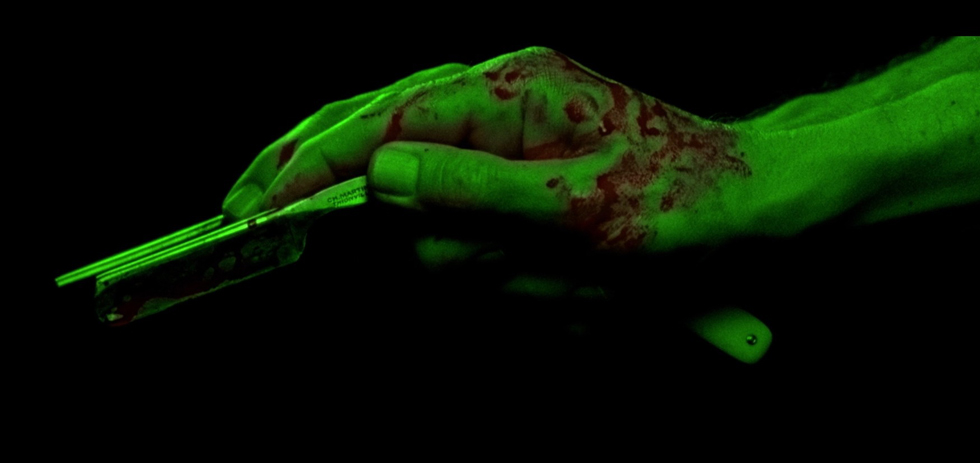
Felix Hubble
1. The Strange Color of Your Body’s Tears (Bruno Forzani, Hélène Cattet)
2. Entertainment (Rick Alverson)
3. The Guest (Adam Wingard)
4. Thank You For Playing (Malika Zouhali-Worrall, David Osit)
5. Foxcatcher (Bennett Miller)
6. Heaven Knows What (Josh Safdie, Benny Safdie)
7. Love 3D (Gaspar Noé)
8. The Diary of a Teenage Girl (Marielle Heller)
9. Inside Out (Pete Docter, Ronnie del Carmen)
10. Dude Bro Party Massacre III (Tomm Jacobsen, Michael Rousselet, Jon Salmon)
H/M: It Follows (David Robert Mitchell), Unfriended (Levan Gabriadze), Pixels (Chris Columbus), The Face of Ukraine: Casting Oksana Baiul (Kitty Green)
My thoughts on The Strange Color of Your Body’s Tears, Entertainment, The Guest, Heaven Knows What, Love 3D, It Follows, and Unfriended can be found elsewhere on the site, so rather than going into great detail on why there here or why you should seek them out, I’ll just say that each film is successful in transcending the genre and formal trappings that tend to constrain others of their ilk and bring something fresh (and substantive) to the table.
I haven’t emotionally connected to a documentary more than Thank You For Playing this year – even though it’s fairly basic in construction, the emotional weight of the film is gigantic. It’s absolutely crushing and had me sobbing uncontrollably throughout. Foxcatcher is one of the most accomplished “mainstream” outings of the year; Miller’s control of pacing and tone is unparallelled, with the film’s more subtle elements unravelling with each rewatch.
I went into The Diary of a Teenage Girl expecting something easy and conventional and was struck down by its almost militant desire to shirk convention and cliche, moving into more radical feminist territory. It’s an absolute must watch and possibly the most pleasantly surprising film I caught this year. Inside Out demonstrates the correct way to craft a children’s film for adults; obviously its emotional themes pale in comparison to those found in more obtuse independent cinema, however the film proficiently presents an image of emotional complexity that isn’t dumbed down for its younger audiences, no audience is infantilised at any point (except maybe during the “abstract thought” passage which feels a little out of place, serving solely as an extended gag) and there’s still a lot to keep younger audiences occupied. It’s a demonstration that you can make these sorts of films and keep everybody happy without relying on misplaced nostalgia or sizeable compromises that are detrimental to the viewing experience of its adult audiences.
Dude Bro Party Massacre III needs little explanation – its the funnest time I’ve had watching a film this year, with an endless stream of strong, rapid-fire gags that constantly hit their targets. Just watch it. Which brings me to Pixels, one of the year’s most maligned features and also one of its biggest surprises. While it doesn’t really qualify for top 10 placement, no film captures working class struggle or class divide in digestable form as impressively as Pixels, nor do any do a better job of reinforcing the importance of the every person. Sure, it’s racist, it’s misogynistic, it’s probably every term you can throw at it, but there’s an earnestness and heart on display here missing in so many festival and theatrical favourites, one absent from too much contemporary cinema. Give me a thousand more Pixels before you give me another James White, it’s a far, far more accomplished piece of utter garbage, one that’s very worthy of your time.
I’d be remiss to not mention Kitty Green‘s fantastic short The Face of Ukraine: Casting Oksana Baiul – the only reason it’s not in my top 5 here is because I disqualified shorts from my personal list. It’s easily one of the best films that came out this year and is more than worthy of your time, packing more emotional resonance in its brief runtime than nearly all features that came out this year. Bring on Green’s next feature, Casting JonBenet!
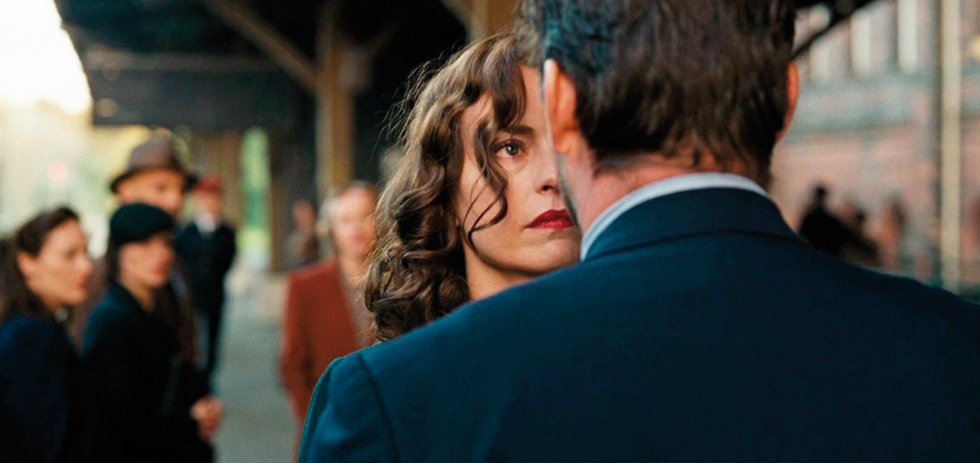
Jessica Ellicott
1. Phoenix (Christian Petzold)
2. The Assassin (Hou Hsiao-Hsien)
3. Cemetery of Splendour (Apichatpong Weerasethakul)
4. Magic Mike XXL (Gregory Jacobs)
5. Eden (Mia Hansen-Love)
6. Arabian Nights (Miguel Gomes)
7. Blackhat (Michael Mann)
8. The Treasure (Corneliu Porumboiu)
9. The Forbidden Room (Guy Maddin and Evan Johnson)
10. Inherent Vice (Paul Thomas Anderson)
Phoenix is a bit of a ghost of 2014’s past, having premiered at last year’s TIFF and then making its way onto many a 2014 top ten. However, as is the nature of smaller films coming to Australia a long, long time after their festival premieres, it only received its theatrical release in October this year. I’m glad it’s remained in the conversation this long, and to see it make its way onto several of my fellow 4:3 contributors’ lists. It’s stuck with me more than anything I’ve seen this year.
The rest of the films on my list are mostly made up of personal highlights from SFF and MIFF (both because of the quality of the programming and the relatively high concentration of my own viewing habits around those festivals). That said, I do think it’s been a particularly strong year for theatrical releases, and a promising year for the SEQUEL, the much maligned bastard child of the ORIGINAL (“and the best”). Magic Mike XXL, Mad Max: Fury Road and Furious 7 all reinstated my faith in movie franchises.
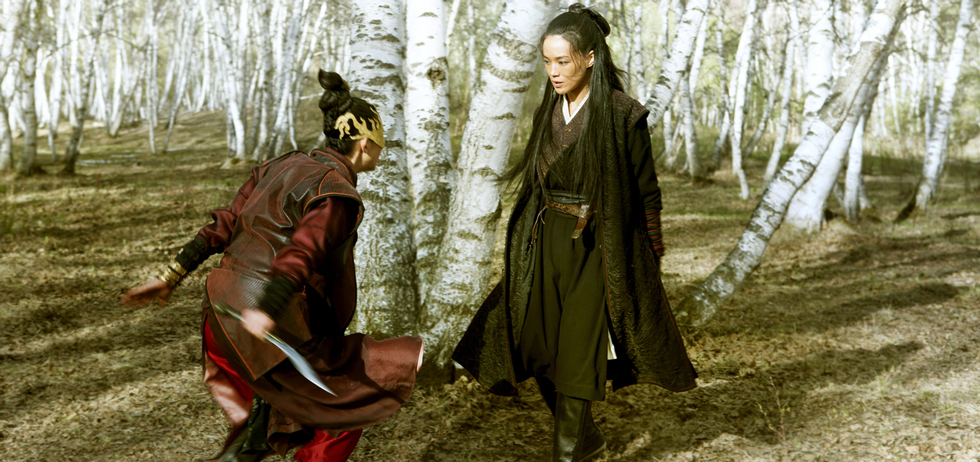
Kenneth Kriheli
I hoped that making a list like this would make me focus on what I watched this year instead of ruminate on what I’ve missed, especially since I’ve been doing the latter all year long. As a cinephile living in a half-hour’s vicinity of NYC, every day feels more or less like a daily missed opportunity, I guess. I’m pretty sure I’ll spend most of this month and January struggling to watch everything that everyone else has listed here (Netflix, I call upon thee!)
The Assassin (#1) – One of the last scenes/long takes of Hou Hsiao Hsien’s wuxia political period drama could very well sum up everything I love about cinema. I will just say it takes place on a mountaintop and spoil no further. Watch it, let your mind hover, question how it was made, and then surrender to its beauty. Everything else is pretty astounding too.
Sicario: Whilst The Assassin was a formal and compositional marvel it’s not the most technically brilliant film of the year. That title goes to Denis Villeneuve’s take on the “current events” subject matter that Cartel Land couldn’t quite curb to its own devices. Villeneuve uses his trademark slow-burn pacing to execute a CIA thriller narrative as a journey through an unnerving maze of equally terrifying rabbit holes, the end to which we never really see and yet wonder if we actually want to as the credits roll.
Phoenix: Simon Curtis’ Woman in Gold almost had me convinced that the entire historical subgenre of Holocaust movies was hopelessly lost in Hollywood, docudrama, and a uniformly didactic treatment of an inherently confrontational subject matter. Leave it to the late Harun Farocki and his Berlin School disciple Christian Petzold to dive headfirst into the politics of Holocaust narrative without puncturing its many sensitive vitals. Instead of flashbacks to scenes of concentration camps and Nazi glory, we get an all-too-recognizably graphic photo as it is obscured through a searching magnifying glass, a hidden number tattoo, and a chillingly described account of a moment that is brushed aside as pointless. Like in the photograph, like the Shoah itself, and like the film’s very period setting, the horror is in the past yet psychologically embedded underneath every visual surface rather than poorly reenacted, from the ruins of Berlin to Nina Hoss’s every gesture and expression that illustrates her character’s romantic yet paper-thin veil of composure.
The Wolfpack: I still don’t get how people dismiss this movie so quickly. Everyone’s complaint is the same: Crystal Moselle found a great subject but failed to properly investigate it. Few actually consider Moselle a part of her own subject (albeit a mostly silent one) beyond her position(s) behind the camera. Unlike Shirley Clarke or the Maysles, Moselle comes across as less manipulative and instead takes on a much more assimilated point of view. She doesn’t lose control of the narrative so much as she relinquishes it to the Angulo brothers. A new kind of motivation and approach are hatched, and whether or not we believe the story we’re being told, we get a fascinating portrait of filmmaking as its very collaborative process is proletarianized.
Time Out of Mind: Although Richard Gere is miscast as the lead of what’s set up as a character drama, Oren Moverman’s take on homelessness manages to put atmosphere at its forefront. everything else from the supporting cast to the sound design, mise-en-scene and editing make it a formally captivating portrait of human stubbornness in the equation of metropolitan alienation.
Other really good films include It Follows and The Walk, two ruminating, cinematic love letters, and Gett: The Trial of Viviane Amsalem and Pawn Sacrifice, two 20th century docudramas that were rounded out by great casts.
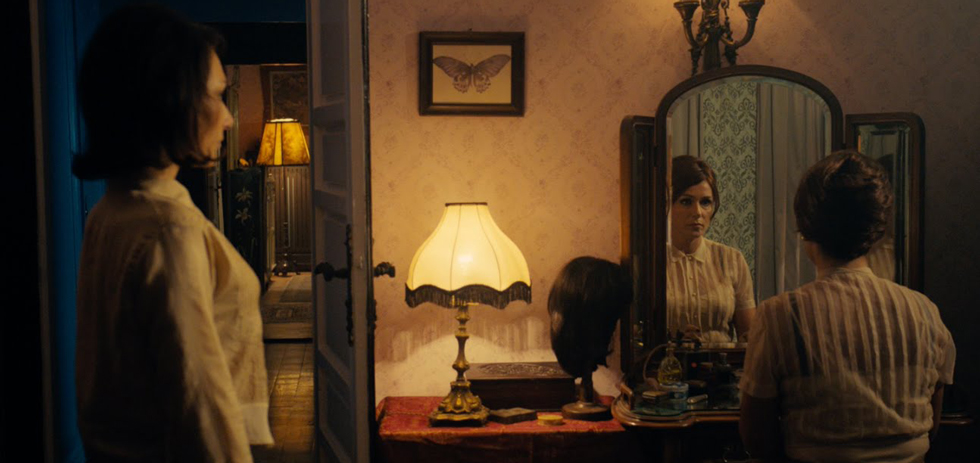
Alexandra Heller-Nicholas
1. The Duke of Burgundy (Peter Strickland, 2014): Determined to disprove my claim that he could never top his 2012 film Berberian Sound Studio, British director Strickland combined his affection for retro Eurosleaze with his giant clever brain and strong stylists eye, all somehow while managing the pull off the highest ranking Bechdel test film made in recent years. My film of the year, no question.
2. The Tribe (Myroslav Slaboshpytskiy 2014): A cartography of the interpersonal political landscape at a deaf school played out through sign language with no subs, The Tribe is hands down the most conceptually and literally brutal film shown in Australian cinemas this year. Apart from anything else, it is an unforgettable reminder that we need to keep a keen eye on parts of the world we don’t perhaps immediately associate with filmmaking to find the real treasures.
3. Partisan (Ariel Kleiman, 2015): The greatest achievement of Vincent Cassel’s lengthy and already impressive screen career, Partisan is the debut feature for Australian director Ariel Kleiman. Aside from offering one of the most riveting interrogations of masculinity and fatherhood seen on screen in a very long time, Partisan also boasts my soundtrack of the year (karaoke enthusiasts take note).
4. Mad Max: Fury Road (George Miller, 2015): I cried like a baby watching this film, so relieved was I seeing a blockbuster made beyond the dominant logic of Hollywood’s insidious dudebro regime. More here.
5. Scherzo Diabolico (Adrián García Bogliano, 2015): Spanish-born Bogliano won my heart with films like Penumbra, Here Comes the Devil and Cold Sweat, but nothing prepared me for Scherzo Diabolico, a revenge film from the perspective of the avenged rather than the avenger. A sophisticated, fun, and intelligent filmmaker at the top of his game.
6. Spring (Justin Benson and Aaron Moorhead, 2014): I discovered Benson and Moorhead in the final stages of writing my book on found-footage horror, their conceptually sophisticated and thoroughly devastating 2011 film Resolution demonstrating forcefully just how potent a field post-found footage horror can be for switched-on filmmakers. But nothing prepared me for Spring, a Lovecraftian romance set in Italy that ticks all the boxes: emotionally intelligent, beautifully scripted, dreamlike cinematography and empathetic, totally human performances (even from its less-than-human female protagonist).
7. Hellions (Bruce McDonald, 2015): McDonald rightly earned a loyal, dedicated fanbase with his cult masterpiece Pontypool in 2008, and Hellions sees him going in different but just as interesting new territory. While the film’s harsh, honest excavation of motherhood as a site of terror for many women (especially young women such as the film’s protagonist), Hellions‘ true achievement is its formal experimentation with the gobsmacking beauty of Infra Red.
8. Felt (Jason Banker, 2014): Along with 2012’s Toad Road, Banker has with Felt built a reputation for collaborative filmmaking which finds him working closely to the autobiographical experiences of his lead female actors. In its driving determination to reject the restraints of the traditional rape-revenge trope, Felt is a tough but worthwhile watch as it delves into the complex terrain of identity, gender, sanity and violence.
9. Tanna (Martin Butler and Bentley Dean, 2015): If there was one film this year I wish I could force everyone to watch it would be this one, a love story performed by members of a tribe in Vanuatu, retelling a key story from their recent history. Australian filmmakers Butler and Dean collaborate with their cast with cultural sensitivity and respect that manifests in every frame of this movie, and it is beautiful in every sense (special note for the pyrotechnic effects resultant of filming on a live volcano!)
10. Creed (Ryan Coogler, 2015): I don’t understand Bond films, I missed out on Star Wars growing up, but this is one franchise whose honour I will defend with a knife in my teeth. I expected little from Creed, so thin was its connection to the films in the series that preceded it, which made its impact even greater: arguably Stallone’s greatest performance next to the first Rocky film, strong script work, and intuitive, kinetic cinematography and editing, this tags only slightly behind Fury Road for my ‘multiplex movie’ of the year.
Honorable mentions:
The Strange Color of Your Body’s Tears (Bruno Forzani and Hélène Cattet, 2013): Although released in 2013 internationally, it was only due to the curatorial genius of the Queensland Film Festival this year that this film got an Australian big-screen premiere. A knowing neo-giallo dripping with references to the iconic Italian horror subgenre, it also stands alone as a masterclass in film style and the tactile erotics of vision and sound.
Lost River (Ryan Gosling, 2014): Minuscule were the fucks I had previously given for Ryan Gosling, a figure I’d dismissed as nothing more than cheekbones and attitude until his collaborations with Nicolas Refn Winding first brought him to my attention. His directorial debut was an emphatic bomb, alone making it worthy of investigation: what I found was an admittedly flawed but hugely ambitious and passionate film, the likes of which could only be made by someone with a serious grasp of both the mechanics and art histories of moving image culture. Extra points also for bringing Barbara Steele and Ben Mendelsohn together in the same film.
Hard to Be a God (Aleksei German, 2013): Although I believe this film had some initial distribution in Australia last year, I only came to it in 2015 so by virtue of that alone it warrants a place here. It has been months since I first saw this film and I am yet still incapable of constructing coherent thoughts around it: Hard to Be a God is simply unequalled, essential cinema.
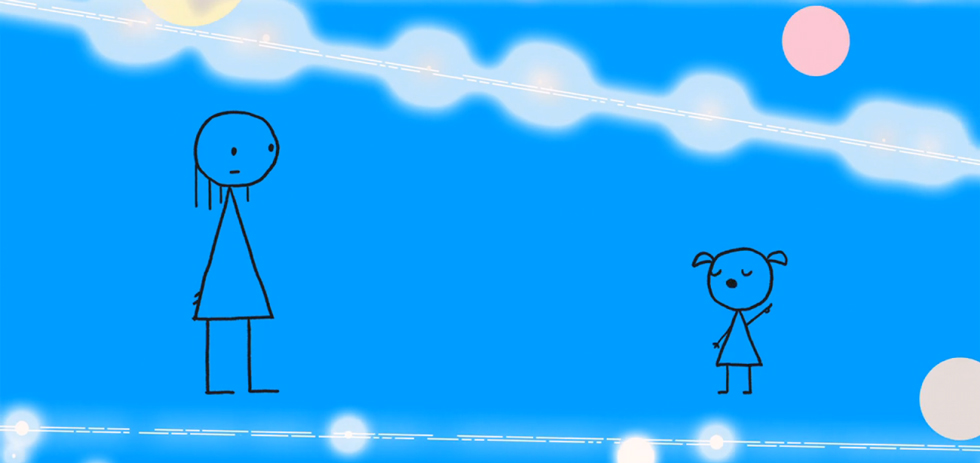
Tope Ogundare
1. World of Tomorrow: The film which, in its mere fifteen-minute runtime, seems to eclipse all its feature-length contemporaries on the strength of limitless imagination and thematic density. Don Herztfeld, now an indisputable American iconoclast, manages – once again – to squeeze a ricocheting complexity from his perversely (and deceptively) simple brand of animation. As with much of Hertzfeldt’s work, World of Tomorrow is preoccupied with the idea of hope in the face of the potentially hopeless. It’s the perfect go-to for those moments in which I’m invigorated by the future. And it’s the perfect go-to in those moments when the future scares the shit out of me.
2. Taxi: The illegally made gem that makes me yearn for more from its maker while making me simultaneously fearful that ‘more’ may ultimately come in the form of martyrdom. Shifting from levity to dread as briskly as the gearstick of a darting cab, Jafar Panahi’s chamber-piece on wheels is another rousing example of art under duress. As much as it is a hard, sobering stare into the face of a dire and dangerous reality, it’s also an ode to a city, to an art-form, and to those souls with an unwavering dedication to freedom.
3. The Lobster: The English language debut with a supposedly weak tail-end that only seems more and more fitting the more I consider it. Greek weird-smith Yorgos Lanthimos continues his acerbic exploration of identity and social construction in a brand new tongue, and loses precious little in translation. The age-old quest for romance and companionship has rarely been painted so perversely, and deservingly so.
4. It Follows: The so-called STD allegory featuring the year’s best 360 degree panning shot not featured in Paul Thomas Anderson’s Junun. Quentin Tarantino’s frustration with this film’s flirtations with greatness is shared by me wholeheartedly. And yet, this so-good-it-should-have-been-great quality is partly what makes David Robert Mitchell’s sophomore effort so hard to dismiss and near impossible to shake off, much like the titular ‘It.’
5. Hill of Freedom: The first Hong Sang-soo film in a few years featuring a protagonist that isn’t a film director/student/actor, though the lovesickness, purgatorial wandering and frequent drinking/eating remain as prominent as ever. Like Hong’s 2012 picture In Another Country, this is a comedy of language and miscommunication as much as it is a comedy of fate, and my lingering uncertainty about what is or isn’t intentionally or unintentionally funny makes this a curious cinematic text that begs revisiting.
6. Eden: The wonderfully scored film in which a fledgling Daft Punk plays at someone’s house party in early 90s Paris, to a crowd that secretly senses something great is being birthed. Even an uncharacteristically ungainly moment from writer-director Mia Hansen-Love (featuring Greta Gerwig narrating a letter) fails to diminish her movie’s druggy ability to conjure the raptures of artistic discovery and volcanic, youthful passion, and the steep, steep come-down.
7. A Pigeon Sat on a Branch Reflecting on Existence: The ludicrously titled film that somehow manages to turn a caricature of genocide into an exquisite visual and sonic lament for mankind and its foolishness. If Swede Roy Andersson returns to directing commercials after this his third film in a supposed trilogy about ‘being human,’ he can do so with the knowledge that he has left an inimitable mark on modern cinema with his painfully honest brand of deadpan live-action cartoons.
8. The Assassin: The achingly artful wuxia I’m deeply compelled to sink into once more, on account of being both dazzled by it and utterly lost. It’s a testament to the seductive and intuitive power of Hou Hsiao-Hsien’s cinema that a narrative so superficially arcane, so culturally specific, can achieve such a crystalline emotional through line; subtle but crystalline. Furthermore, this work could easily be appreciated purely on the level of colour, movement and sound; in other words, utterly sensually.
9. Mia Madre: The mild-mannered Italian dramedy whose inclusion on this list is somewhat vindicated by its topping Cahiers du Cinema’s ten best of 2015, for what it’s worth. Centred around a film director increasingly destabilised by the pending loss of her ailing mother, this film exudes an elegant earnestness that somehow bulldozed my walls of cynicism, though I should also blame/credit my attraction to anything which depicts the process of filmmaking with relative understatement, John Turturro’s grandstanding aside.
10. The Diary of a Teenage Girl: The film that isn’t so much about a female teen’s sexuality as it is about a female teen’s road to independence and agency, with plenty of sex and animated visual flourishes along the way. Sure, Marielle Heller’s coming-of-age tale set in the hazy 70s may evoke – however obliquely – Sofia Coppola’s debut, but Bel Powley’s wide-eyed powerhouse turn makes this an altogether more raw, unapologetically vulgar and vocally honest (if not necessarily greater) beast.
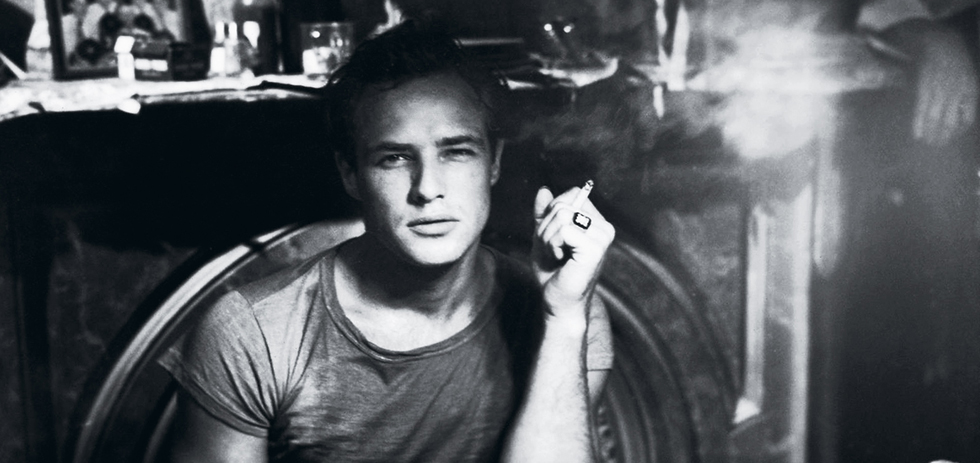
Ali Schnabel
Basically, every film in my top ten this year is one that made me cry – I don’t know if that says more about me or the state of cinema in 2015.
My favourite for 2015 was Stevan Riley’s Listen To Me, Marlon, which sifted through hundreds of hours of Marlon Brando’s personal footage (voice recordings and home movies along with interview and film clips) to create an extremely engrossing and tender look at the legendary actor. This was the first film I saw at MIFF and it really floored me: it was so emotionally salient, betraying a real tenderness and curiosity about Brando’s life and method that feels unparalleled. Its delivery (sometimes employing a 3D render of Brando’s head ‘talking’) and assembly of footage is absolutely superb; I really can’t flog this movie hard enough.
Other docos on my list also screened at MIFF – Sherpa and My Love, Don’t Cross That River. Aside from the absolutely bonkers cinematography of Sherpa, it created a fascinating and detailed picture of a contentious issue that is, perhaps, not at the forefront of everybody’s minds: the exploitation of the Himalayan guides that escort mountaineers up Everest. It manages to be both extremely broad and incredibly detailed all at once and I highly recommend it to everybody. My Love, Don’t Cross That River was actually released in South Korea in late 2014 and has gone on to become the most commercially successful Korean documentary/independent film of all time. It follows at an elderly married couple for fifteen months until the last moments of their 76 year marriage. It’s an absolute tear-jerker, and one of the most profoundly moving and emotionally intricate movies I think I’ve ever seen.
The only film that came close to producing the same amount of tears as My Love, Don’t Cross That River for me in 2015 was big-grosser Inside Out. The provisionally registered psychologist in me really, really dug their representation of memory structures, and it also came with one of the best memories in a film for me in 2015: during the screening, I was crying so much that the stranger next to me patted my arm in sympathy. Thank you, kind girl.
Other big releases that I dug this year included Brooklyn, Macbeth and Amy. Brooklyn was a big surprise for me, as the words ‘romantic period drama’ usually make me want to gag, but it was just so goddamn endearing and well executed that I couldn’t help but wish that Tony was my boyfriend. Macbeth excited the Shakespeare nerd in me for nailing down the themes of the Scottish play while adding to it in a way that felt true to and expanded the story. I’d been waiting for Amy for a long time, and it did not disappoint: it was tender, celebratory and complicated in all the ways that its subject matter demands.
It Follows was my favourite horror of the year by far, even though it made me so anxious that I couldn’t calm down until an hour after it finished (that’s when you know it’s good?) The crazy/crazy good soundtrack by Disasterpeace and some really good scares are to blame for that. Another banger with a banger soundtrack was Tangerine, a high energy trap affair that was a nice reprieve from all the crying. Finally, props to Creed for pushing out the previous last film on this list – it was quite simply the best sports movie I’ve seen since Rocky IV, and one of only three films this year that I couldn’t wait to see again once the credits rolled (Listen To Me, Marlon and Brooklyn were the other two).
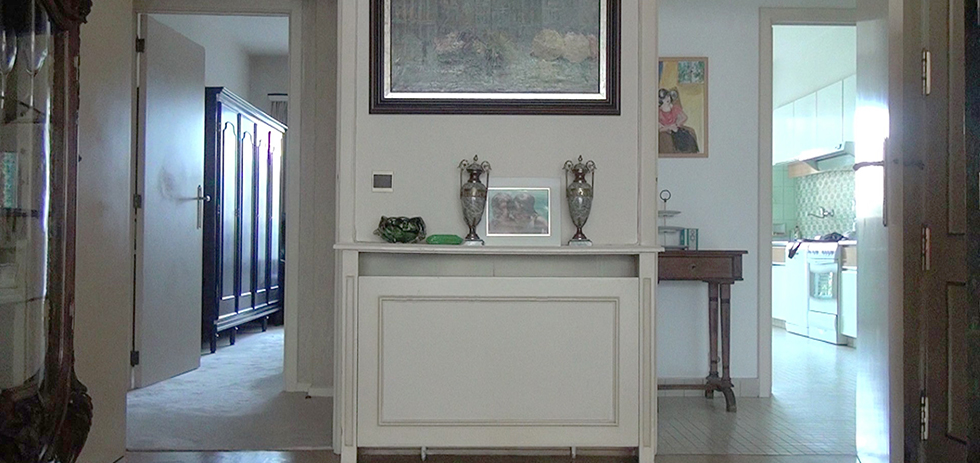
Luke Goodsell
10 favourites, in alphabetical order (though No Home Movie is my #1):
The Assassin (Hou Hsaio-Hsien)
Blackhat (Michael Mann)
Cemetery of Splendour (Apichatpong Weerasethakul)
Entertainment (Rick Alverson)
The Forbidden Room (Guy Maddin and Evan Johnson)
Heaven Knows What (Josh and Benny Safdie)
No Home Movie (Chantal Akerman)
Respire (Mélanie Laurent)
Unfriended (Leo Gabriadze)
The Witch (Robert Eggers)
Honourable mentions: Tangerine, A Pigeon Sat on a Branch Reflecting on Existence, Mustang, Carol, Mad Max: Fury Road, Ma, It Follows, Bridge of Spies, Stinking Heaven, Chevalier, The Diary of a Teenage Girl
As usual, much of the year’s interesting work was being done outside of narrative cinema. Two of my favourite avant garde filmmakers made welcome returns to the short form: Peter Tscherkassky, with his as-expected sublime riff on vintage erotica, The Exquisite Corpus; and Michael Robinson, whose Mad Ladders continues his fascination with pop deities to play like an occult awards show from the beyond. Speaking of which, Eric Wareheim’s video for Charli XCX’s “Famous” could well stand alongside Robinson’s surrealism and playful dark humour. A candy-coloured pop clip that splinters from a teenage girl’s bedroom into a subterranean netherworld of grotesque, decaying youths, selfie sticks and adolescent kidnapees, the short lets Wareheim indulge his Lynchian side while peering into the strange soul of commercial music—a bad dream in which his star is cheerfully complicit. But my favourite short—if not film, period—of 2015 is Johann Lurf’s Twelve Tales Told (screened at MIFF), which intercuts 12 familiar studio logos and fanfares until they become this weird, almost unrecognisable abstraction. The film is so simple in execution—it literally just cuts back and forth between each logo—and so disarmingly effective, transforming clips we’ve seen thousands of times into something that exists in that sweet void between celebration and satire. The sad whimpering of the MGM lion as Lurf’s piece fades out is a moment I won’t soon forget.
Elsewhere, it was also a good year for essay films. Thom Andersen returned with The Thoughts That Once We Had, a wonderful, and for me at least, deeply affecting personal journey through cinema that engaged with film history in a way that few others can. And Andersen-inspired works were everywhere: Jenni Olson’s The Royal Road mixed personal fiction with a tour through California’s historic highways to great effect, while Charlie Lyne’s sophomore feature Fear Itself offered an impressive exploration of horror cinema as both nightmare and therapy. I’m looking forward to seeing where both of them go next.
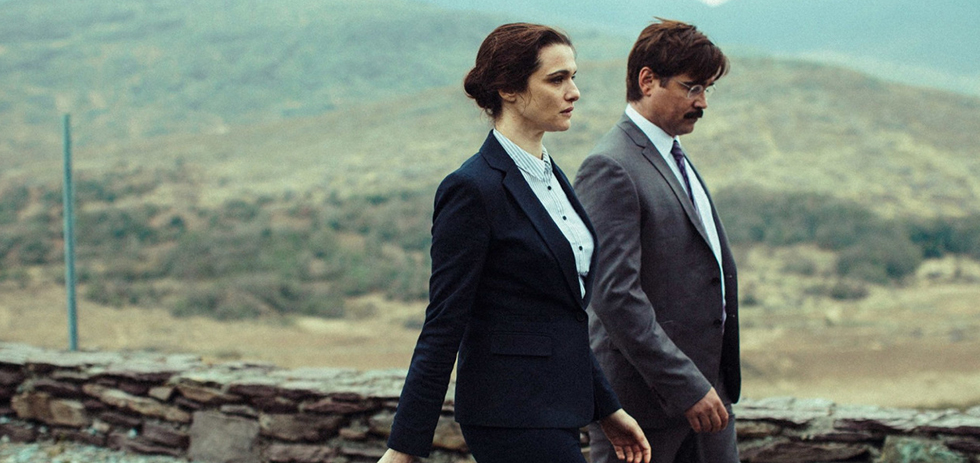
Ian Barr
Cemetery of Splendour (Apichatpong Weerasethakul)
Clouds of Sils Maria (Olivier Assayas)
Heaven Knows What (Josh & Benny Safdie)
Horse Money (Pedro Costa)
Inherent Vice (Paul Thomas Anderson)
The Lobster (Yorgos Lanthimos)
Mad Max: Fury Road (George Miller)
One Floor Below (Radu Muntean)
The Pearl Button (Patricio Guzman)
Spartacus & Cassandra (Ioanis Nuguet)
HM: Anomalisa (Charlie Kaufman), Shaun the Sheep (Mark Burton, Richard Starzak), The Other Side (Robert Minervini), The Treasure (Corneliu Porombuiu), Field Niggas (Khalik Allah), 88:88 (Isiah Medina)
Shorts + bits & bobs: Space Noise (Makino Takashi) / Nathan For You s03e05, “Smokers Allowed” / Night Without Distance (Lois Patino) / Sea of Vapors (Sylvia Schedelbauer) / Twelve Tales Told (Johann Lurf) / opening section of Arabian Nights Volume 3: The Enchanted One (Miguel Gomes), the “Road Rage” segment of Wild Tales (Damián Szifron)
Being a cinephile in Sydney, at least for me, has started to settle into a predictable year-round groove: Five months of cinema-going based on the barren slate of commercial theatrical releases, peppered with a handful of films playing at the nationally-centric film festivals (French, German, Spanish), then Sydney Film Festival ending the drought in June, then another two months of drought, then a week-long trip to Melbourne Film Festival to catch up with the stuff that’s too fruity for Sydney Film Fest, then another another drought until the end of the year. Grateful to not have to compile a list based on the arbitrary dictates of “Australian release dates”, then.
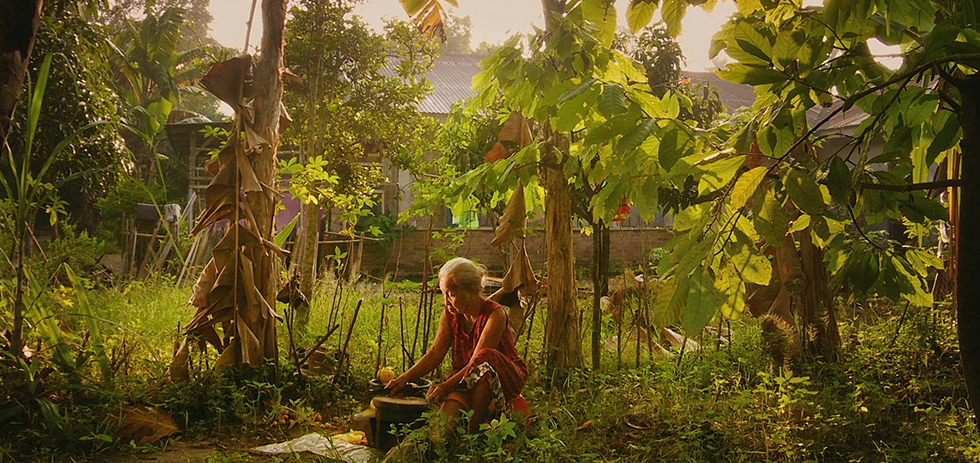
Dominic Barlow
1. The Look of Silence: Beyond superlatives. Finds even richer textures than The Act of Killing by interacting with the complicit and wounded, and getting burned for it.
2. Mad Max: Fury Road: For once, an invigorating static shock from the blockbuster machine. It’s a morbid journey of intricate set pieces, with aesthetic verve at every turn.
3. Heaven Knows What: Arresting from the first frame, and averring from any comfort in its urban squalor. Arielle Holmes is an incredible artist and her directors (Ben and Joshua Safdie) have a deft touch.
4. Original Copy: What could easily have been a human interest quickie – Mumbai’s last cinema screenpainter – finds a mostly wordless hymn honouring cinema and its resultant fellowship.
5. Inside Out: If getting this and the solid-as-a-bump-mapped-rock Good Dinosaur out in one year was the trade-off for the oncoming wave of Pixar sequels, it was well worth it. Its scurrying set pieces are an effervescent cover for its narrative and editing masterstrokes.
6. Magic Mike XXL: The purest hit of rewatch-demanding joy this year. Even out of the director’s chair, Soderbergh has some more miracles left in him.
7. It Follows: Chalk it up to the stretches of wordless paranoia or the dreamy score from chiptuner Disasterpeace, but I’ve never been so immediately transfixed by a horror film before…
8. Dude Bro Party Massacre III: …nor by a horror-comedy before (even Shaun of the Dead needed a rewatch). They played Kung Fury before this at the Sydney Underground Film Festival, but this goes beyond retro-satirical trappings to find brilliant gags, gleeful distaste and mindful gender politics.
9. Eden: Mia Hansen-Love and co find universality in the specificities of the ’90s French touch scene. A sorrowful odyssey that finds art a perilous, ensnaring lover.
10. Thank You For Playing: Art as a painful but necessary release. Not content with being genuinely heart-wrenching, it portrays the intuitive and time-honoured traits of games better than any previous doco about them.
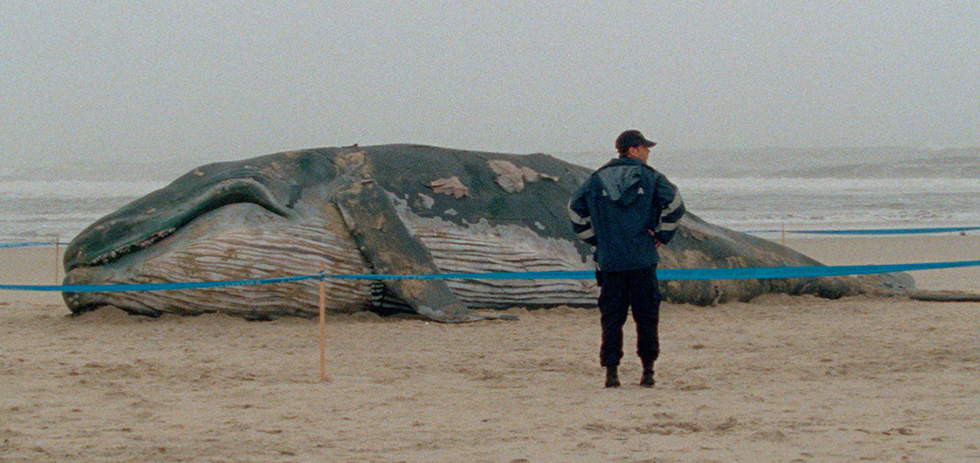
Jaymes Durante
1. Arabian Nights (Volumes 1-3): Miguel Gomes abandons his film barely thirty minutes into its six-hour running time, leaving direction to the body politic. What follows is one of the most irreverent, expansive and truly democratic films ever produced. It considers Portugal’s myriad stories with equal weight, and puts its money where its mouth is — there’s a soothsaying chook, a moral High Court, a hermit, a neglected dog and men with hard-ons. Sometimes it’s stylized and highly allegorical, at others it’s near-actuality. Filmmaking led by the wind and the working class, soundtracked by The Carpenters and the transcendent whistle, trill, stroke of an Inebriating Chorus of Chaffinches. Cinema at 360 degrees.
2. Mistress America: Greta Gerwig offers a modern twist on the screwball woman and floods the screen with sheer star presence in Noah Baumbach’s Mistress America. The film debunks the myth of authenticity in recent traditions of American filmmaking through the watercourse of an ebullient, talky, madcap comedy. It culminates in an unforgettable comic setpiece set in a Long Island mansion, where expert blocking navigates the jaunty, rapid-fire screenplay by Gerwig and Baumbach. Lola Kirke is a discovery.
3. The Look of Silence: The inscrutable stare of ophthalmologist Adi Rukun — who has since fled his native Indonesia — is the defining cinematic image of 2015. Taking structural cues from Kazuo Hara’s The Emperor’s Naked Army Marches On for his Act of Killing follow-up, Joshua Oppenheimer has made one of the finest and most complex films on the topic of historical trauma. In grappling with Indonesia’s barely-concealed wounds from a victim’s perspective, and using calmness and stillness to disarm and penetrate, Oppenheimer and Rukun have disrupted the victor’s history and forced a nation to reckon with its genocidal past.
4. Carol: The ineffable sensation of falling in love shines through the specks and crackles of 16mm film in Todd Haynes’ Carol, adapted by screenwriter Phyllis Nagy from the novel by Patricia Highsmith. With a street photographers eye, Haynes and cinematographer Ed Lachman capture the miniscule frissons and repressions of two women with desires unsanctioned by a society in the grips of Eisenhower-era conservatism. As Carol Aird and Therese Belevit, Cate Blanchett and Rooney Mara are sublime.
5. 45 Years: Andrew Haigh’s dissection of the ephemera of happiness has a sturdy marriage at its centre. Time’s hand is played; it’s too far-gone for this couple — played by Tom Courtenay and the magisterial Charlotte Rampling — to let their relationship fall apart. Instead, we watch them face a monumental challenge, and they don’t quite clear the jump. Sadder than love lost, it’s love faded.
6. The Assassin: “The way of the sword is pitiless. Your skills are matchless but your mind is hostage to human sentiments.” A simple story riddled with complexities. Wuxia by way of Bresson.
7. Inherent Vice: Few 2015 film experiences were as wondrous as Paul Thomas Anderson’s contraband conspiracy epic. Huffing its atmosphere and following its maze of junkies, dentists and real-estate moguls leads us to insidious non-truths that spells the end of the Summer of Love. More than just his most absurd and purely amusing film since Magnolia, it’s also some of Anderson’s most formally adventurous work to date.
8. Mommy: An refreshingly irony-devoid melodrama from Canada’s most prolific cinematic export, Xavier Dolan. The film’s headline-grabbing Insta-conceit was misinterpreted by many as attention-seeking gimmickry. As a structural tool that metabolises Steve’s bracing mental difficulties, it’s completely effective. Mommy is unabashedly emotional, using daggy pop music and earthy performance to tear violently at the heartstrings. But when it’s this passionate and well wrought, it’s so emotionally gratifying.
9. Magic Mike XXL: The most inclusive and purely enjoyable studio film of the year, a classical musical-comedy dressed down in tear-off pants and a thong. Square framing and a fair dose of formal restraint puts a premium on narrative and movement, letting solid performances and a script with an empowering feminist bent thrive. Its infectious mood is thanks to a sustained energy and positivity that’s near-utopian, exploding by film’s end into a Berkeley-esque strip-show fantasia.
10. Timbuktu: Abdamerhe Sissako paints the titular town of this harrowing and visually astonishing film in humanist brushstrokes, and with a gentleness that indicts the jihadist ideology whilst distinguishing it from traditional Islamic beliefs. But it’s never didactic and never furious, keeping commentary embedded in narrative and confined to its calm, enthralling story of a humble cattle-herder on the outskirts of the town.
Honourable mentions: Cemetery of Splendour, A Poem is a Naked Person, Selma, Buzzard, Mad Max: Fury Road, Heaven Knows What, Queen of Earth, Eden, The Club

Ivan Čerečina
1. Horse Money (Pedro Costa)
2. Phoenix (Christian Petzold)
3. Fish Tail (Joaquim Pinto and Nuno Leonel)
4. The Pearl Button (Patricio Guzmán)
5. Cemetery of Splendour (Apichatpong Weerasethakul)
6. Arabian Nights (Miguel Gomes)
7. Taxi (Jafar Panahi)
8. Storm Children – Book One (Lav Diaz)
9. Pasolini (Abel Ferrara)
10. Approaching the Elephant (Amanda Wilder)
Another strong year, and I think a particularly good one for documentary filmmaking. Though I missed a few of the key documentaries that made it to festivals this year (with the most glaring absence probably being The Look of Silence), there were a number of great surprises to make up for it. I would like to make special mention of the criminally under-seen and under-discussed Fish Tail by Joaquim Pinto and Nuno Leonel, which I found to be a very moving reflection on an aborted project that managed to cut across time in a very elegant fashion.
As with last year’s releases, I felt that there was a large difference in quality between films that played in festivals versus those that got a theatrical release here (of the films listed, only Phoenix received a very limited theatrical run). This probably speaks above all to my particular preferences and cinema-going habits, but of the films that I caught in their theatrical run here, only Mad Max: Fury Road was a real contender for my top 10. And to end with, a few films that had their festival premieres overseas in 2015 that I’m hoping will make it to Australia in the new year: In the Shadow of Women (Garrel), Peace to Us in Our Dreams (Bartas), In Jackson Heights (Wiseman).
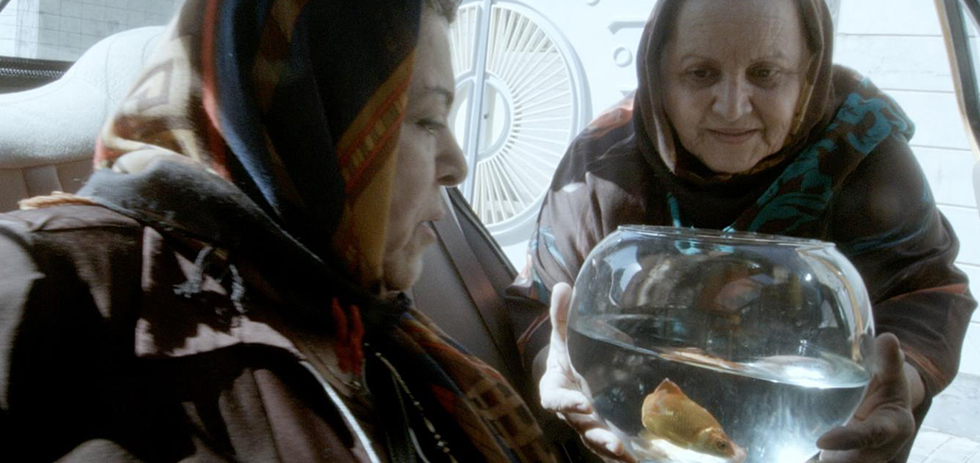
Virat Nehru
It’s been the year of political films for me. Of course, you might be of the persuasion that all art is in one way or another political per se; that films are a medium of political expression and/or dissent. However, here I don’t mean ‘political’ in a teleological sense. These films aren’t necessarily serving political purpose. And yet, it’s intuitively obvious that the films that have stayed in my consciousness for 2015 have a strong political undercurrent, be it in terms of tone, form, structure or narrative exegesis.
1. Taxi: There was no doubt in my mind that this would land the number one spot in my list. And that’s not because it has the most memorable opening shot of any film this year; or the fact that the film had to be smuggled out of Iran in order to be showcased because the director Jafar Panahi has been banned from making films in the country. The magic of this film is in its perceived contradiction: it fills you with a sense of immense hope and optimism despite painting a depressingly harrowing picture. Honestly, I’m not quite sure how this happens. Maybe, it’s the way the film is framed – the audience as the invisible companion in Panahi’s taxi; maybe it’s Panahi’s ever-present disarming smile; maybe it’s the dangerously innocent questions that Panahi’s young niece asks him regarding the freedom of artistic expression.
2. Court: Indian cinema has changed more radically in the past 3-5 years than it has over the past two decades. And there’s no better example of that than Court. Its bleak and biting social commentary about the Kafkaesque nightmare that is the Indian legal system is matched by a technical finesse in camerawork and framing. The narrative canvas is immense: from the use of songs as protest art, to a pervasive insight into Indian classism and institutional structures, rounded off by some absurdly hilarious scenes surrounding legal procedure. It’s a relentless sucker punch to the gut laced with plenty of black humour.
3. The Club: There is an atmospheric eeriness present in The Club that makes it an interesting viewing experience. Director Pablo Larrain uses his minimalist style to such delicious effect that the end result is mesmeric. Right from the haunting score by Carlos Cabezas to the visual framing of the desolate beachtown, there is understated quality to the film that masks the horror of the subject matter. It’s a masterful example of using setting and a sense of place to construct a narrative.
4. The Assassin: Without doubt, The Assassin is the best advocate for the ‘cinema as experience’ brand this year. There has been a lot of discussion about the plot, but frankly, I didn’t really care. I was truly seduced by the visually visceral experience that was this film. And that makes me sad, because I want to be seduced by the cinematic medium more often in that manner. Its meticulous craftsmanship had me in a daze.
5. A Pigeon Sat on a Branch Reflecting on Existence: Okay, I’m calling it. “We’re in the entertainment business” is the most memorable dialogue of 2015. The way it’s uttered – full of pathos and a resignation of fate – communicates so much within the narrative and beyond. The last part in director Roy Andersson’s ‘Living Trilogy’, the film plays with form and narrative expectation daftly and is as unique as it is absurd.
6. Talvar: Vishal Bhardwaj is one of the most innovative writer-directors currently active in Hindi cinema. His trilogy of Shakespeare adaptations – Maqbool (Macbeth), Omkara (Othello), and Haider (Hamlet) are a testament to his willingness to challenge stylistic convention. So it’s no surprise when his screenplay for Talvar takes the age-old Rashomon device and plays with its dexterity. In doing so, Talvar becomes so much more than an “investigation” narrative or a straightforward crime thriller.
7. Entertainment: This is the most recent film I saw and I am so glad I didn’t miss it. Director Rick Alverson continues his quest in making what I can only term as the “quintessential anti-film”. In a way, Entertainment is the most overt and consciously political film out of all these in the list. It is a bold statement against the consumer-centric philosophy of film-making.
8. A Tale of Love & Darkness: All-round powerhouse talent Natalie Portman chose to adapt Israeli author Amos Oz’s autobiography of the same name for her debut directorial venture. A person of infinite talents, Portman also adapted the book for the screenplay and does most of the heavy-lifting in the acting department, playing Oz’s mother Fania. However, it’s the structural ingenuity of the film that takes you by surprise. The first half of the film traces the political turmoil of the Oz family trying to survive in Jerusalem. The second half completely shifts in tone and morphs into a character study of a person trying to cope with severe depression. It’s the intricate interplay of the personal with the political that draws you in and leaves you with a lump in your throat.
9. Phoenix: Nina Hoss is my pick for the standout performance this year. Her portrayal is laced with subtle nuances that elevate Phoenix from a very good film to a great film with immense repeat viewing value. The narrative is understated yet powerfully resonant – the personal story of loss and tragedy juxtaposed over the crumbling ethos of a nation struggling to deal with the stark realities of war.
10. Haemoo: This is the surprise entry in this list. Back when I saw this film at the Sydney Film Festival, I had no idea what to expect. The first half builds to a supposedly conventional ‘journey’ narrative but the second half swiftly pulls that rug of comfort from your feet providing one of the most shocking and unexpected twists of any film this year. Special mention to the way the film is shot, as the sea fog feels like an active character in the narrative, playing the sensibilities of the crew on the ship as they struggle to keep their sanity.
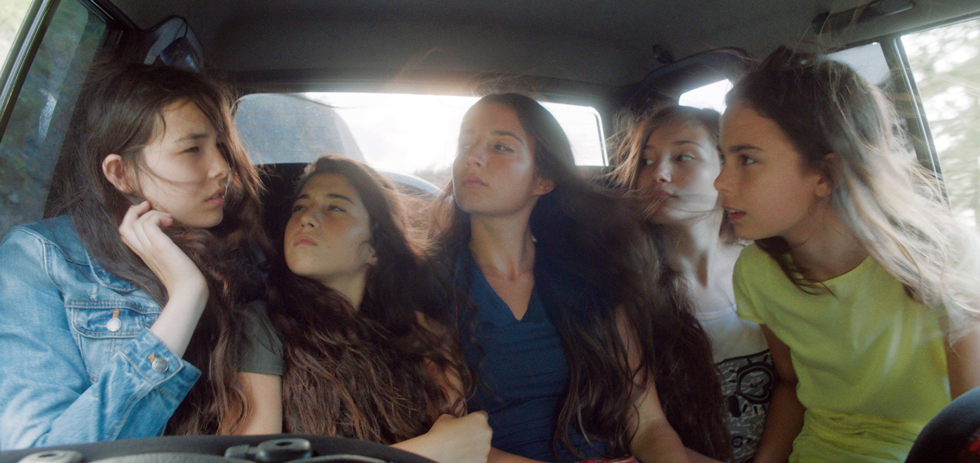
Melba Proestos
In no particular order, except for The Lobster, but y’all already knew that.
The Lobster (Yorgos Lanthimos)
Mustang (Deniz Gamze Ergüven)
Arabian Nights (Miguel Gomes)
The Daughter (Simon Stone)
Ex Machina (Alex Garland)
Spartacus & Cassandra (Ioanis Nuguet)
Tangerine (Sean Baker)
Heaven Knows What (Josh and Benny Safdie)
Inherent Vice (Paul Thomas Anderson)
Cemetery of Splendour (Apichatpong Weerasethakul)
H/M: Love (3D), Slow West, Horse Money, The Assassin, Spotlight, Mistress America, Gett: The Trial of Vivian Amsalem
The better part of this year was spent in eager anticipation of many of the films which find themselves on this list today. These films – The Daughter, The Lobster, Arabian Nights, Ex Machina and Inherent Vice – took my unreasonably high expectations and tore them a new one. While others – Mustang, Cemetery of Splendour, Spartacus and Cassandra and Tangerine – quenched a thirst that I didn’t even know I had. None, however, was more refreshing than The Lobster. Lanthimos’ latest, his first in English, spoke my language more than ever before and yielded images of such unimaginable beauty that you would have to be some kind of monster not to have them on regular Facebook cover photo rotation.
